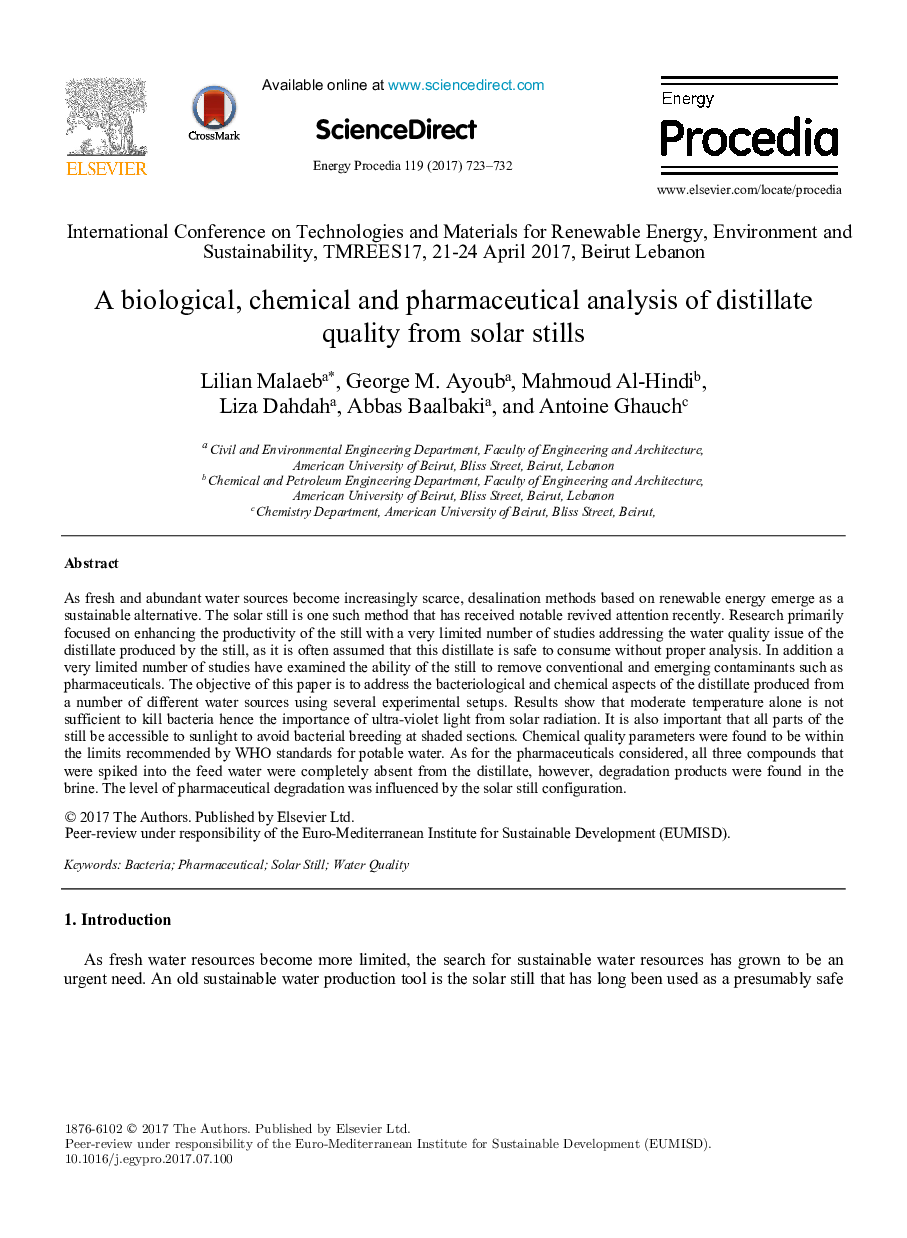| Article ID | Journal | Published Year | Pages | File Type |
|---|---|---|---|---|
| 5445137 | Energy Procedia | 2017 | 10 Pages |
Abstract
As fresh and abundant water sources become increasingly scarce, desalination methods based on renewable energy emerge as a sustainable alternative. The solar still is one such method that has received notable revived attention recently. Research primarily focused on enhancing the productivity of the still with a very limited number of studies addressing the water quality issue of the distillate produced by the still, as it is often assumed that this distillate is safe to consume without proper analysis. In addition a very limited number of studies have examined the ability of the still to remove conventional and emerging contaminants such as pharmaceuticals. The objective of this paper is to address the bacteriological and chemical aspects of the distillate produced from a number of different water sources using several experimental setups. Results show that moderate temperature alone is not sufficient to kill bacteria hence the importance of ultra-violet light from solar radiation. It is also important that all parts of the still be accessible to sunlight to avoid bacterial breeding at shaded sections. Chemical quality parameters were found to be within the limits recommended by WHO standards for potable water. As for the pharmaceuticals considered, all three compounds that were spiked into the feed water were completely absent from the distillate, however, degradation products were found in the brine. The level of pharmaceutical degradation was influenced by the solar still configuration.
Related Topics
Physical Sciences and Engineering
Energy
Energy (General)
Authors
Lilian Malaeb, George M. Ayoub, Mahmoud Al-Hindi, Liza Dahdah, Abbas Baalbaki, Antoine Ghauch,
